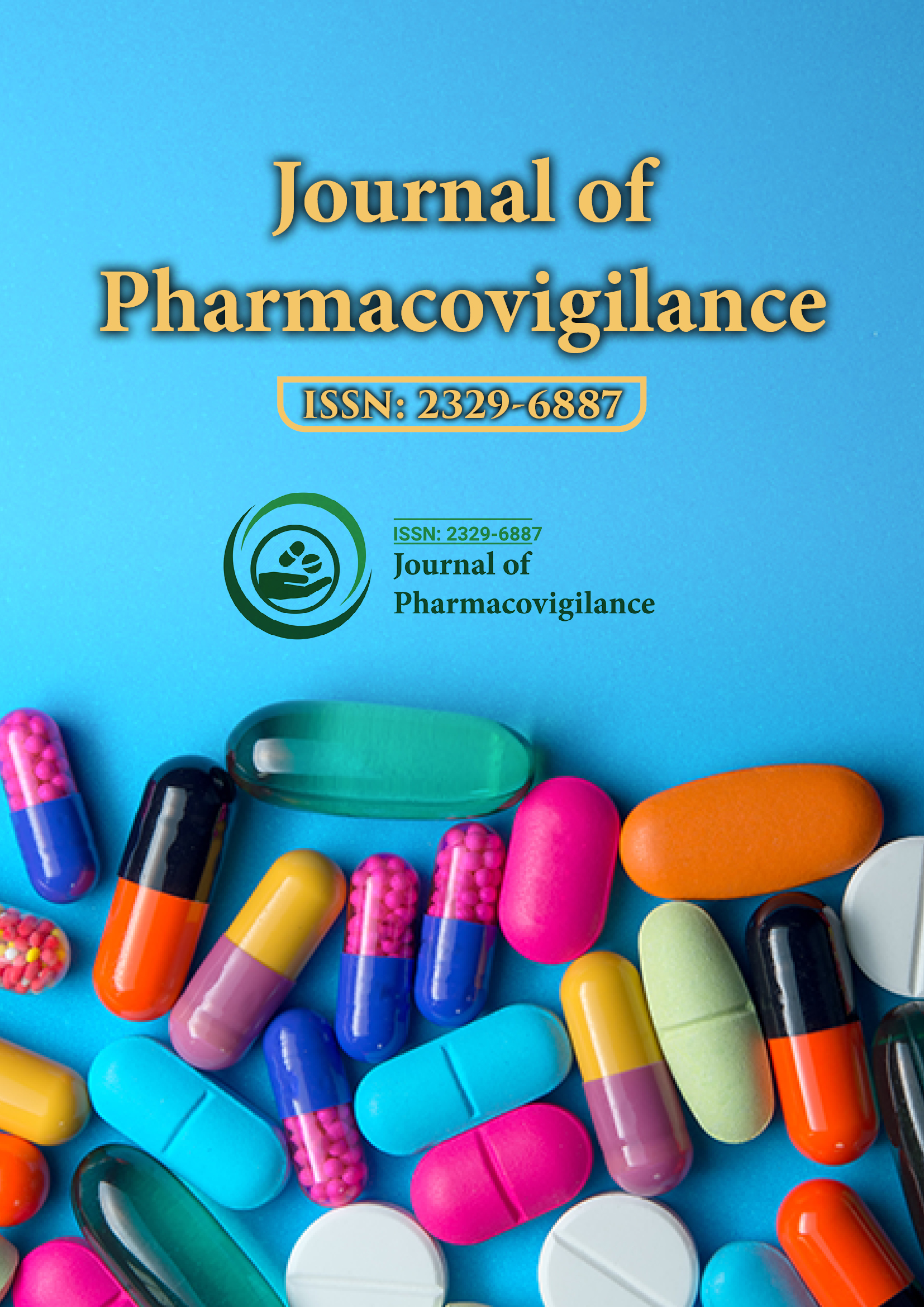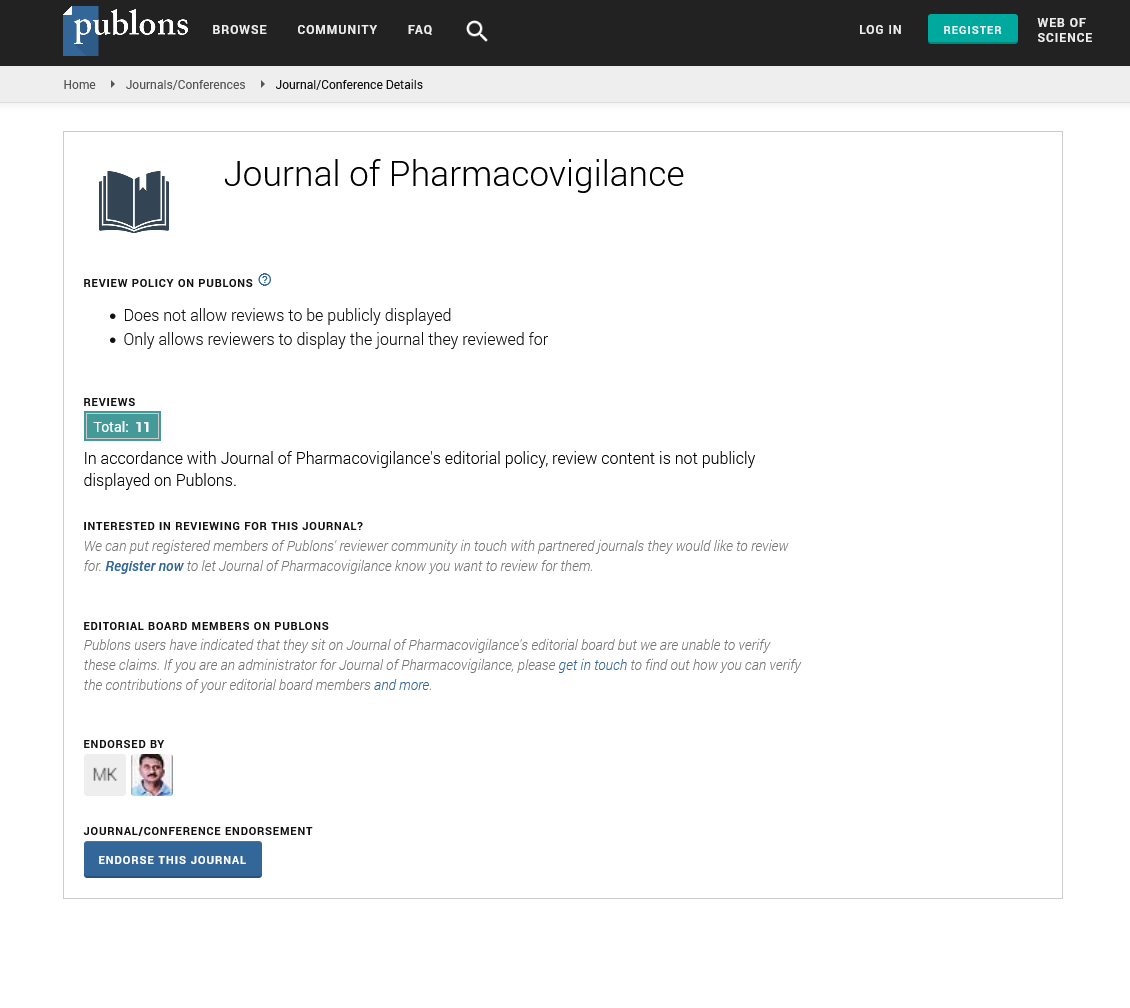Indexed In
- Open J Gate
- JournalTOCs
- The Global Impact Factor (GIF)
- RefSeek
- Hamdard University
- EBSCO A-Z
- OCLC- WorldCat
- Publons
- Euro Pub
- Google Scholar
Useful Links
Share This Page
Journal Flyer

Open Access Journals
- Agri and Aquaculture
- Biochemistry
- Bioinformatics & Systems Biology
- Business & Management
- Chemistry
- Clinical Sciences
- Engineering
- Food & Nutrition
- General Science
- Genetics & Molecular Biology
- Immunology & Microbiology
- Medical Sciences
- Neuroscience & Psychology
- Nursing & Health Care
- Pharmaceutical Sciences
Opinion Article - (2025) Volume 13, Issue 1
Pharmacovigilance in Gene Therapy Clinical Trials
Alicia Renfield*Received: 03-Mar-2025, Manuscript No. JP-25-28636; Editor assigned: 05-Mar-2025, Pre QC No. JP-25-28636 (PQ); Reviewed: 19-Mar-2025, QC No. JP-25-28636; Revised: 26-Mar-2025, Manuscript No. JP-25-28636 (R); Published: 02-Apr-2025, DOI: 10.35248/2329-6887.25.13.504
Description
Gene therapy has emerged as a revolutionary treatment modality for a range of genetic and acquired diseases by introducing, removing, or altering genetic material within a patient's cells. While its potential to correct the root cause of diseases is unprecedented, gene therapy also poses significant safety challenges that demand a robust and adaptive Pharmacovigilance (PV) framework, especially in clinical trial settings. Traditional PV systems, developed primarily for small-molecule drugs and biologics, may fall short in capturing the complex, long-term, and sometimes unpredictable adverse events associated with gene-based therapies. Therefore, monitoring safety in gene therapy clinical trials requires a deeper understanding of gene transfer technologies, vector biology, host responses, and the integration of new tools for early risk detection and mitigation.
One of the unique challenges in gene therapy PV is the long latency period of some adverse effects. Unlike conventional drugs that are metabolized and cleared relatively quickly, gene therapies particularly those using viral vectors can persist in the host system for extended periods. This persistence increases the potential for delayed toxicities such as insertional mutagenesis, oncogenesis, immune responses to transgene products, and off-target effects. As a result, pharmacovigilance in gene therapy trials must not only cover the treatment period but extend into long-term follow-up, often spanning years. This demands sustained engagement with trial participants and the development of specialized registries to monitor and document late-onset adverse events.
Another concern in gene therapy trials is the variability in vector behavior and biodistribution. Viral vectors such as Adeno- Associated Virus (AAV), lentivirus, and retrovirus each have distinct safety profiles influenced by serotype, promoter strength, and mode of delivery. These variables can result in differential expression patterns, tissue tropism, and immunogenicity, all of which can contribute to adverse outcomes. Current PV systems must be equipped to capture this vector-specific data and analyze it alongside clinical manifestations. Furthermore, because of the personalized nature of some gene therapies particularly those based on autologous cell modification individual patient variability becomes an even more significant factor in safety profiling.
The immune system plays a pivotal role in gene therapy pharmacovigilance. Immune responses to viral vectors or the expressed transgene product can lead to acute toxicity, inflammation, or loss of therapeutic efficacy. For example, AAV-based therapies have shown to induce capsid-specific immune responses that may require immunosuppressive management. In clinical trials, these immune-mediated events must be carefully documented and assessed for causality and recurrence, with a strong focus on identifying biomarkers for early detection. The use of immune assays, cytokine profiling, and longitudinal immune monitoring becomes indispensable in these contexts.
Risk management in gene therapy clinical trials also includes the identification of Adverse Events of Special Interest (AESIs), such as cytokine release syndrome, vector shedding, and unexpected integration events. These risks necessitate protocol-specific pharmacovigilance plans with predefined safety endpoints, intensive monitoring schedules, and adaptive reporting mechanisms. Moreover, informed consent documents must clearly communicate the potential for unknown or long-term risks, given the relatively nascent understanding of gene therapy’s full safety profile.
Another significant aspect of PV in gene therapy trials is regulatory oversight and harmonization. Regulatory agencies like the FDA, EMA, and PMDA have established specific guidelines for gene therapy trials, including requirements for long-term follow-up, risk-based monitoring, and centralized adverse event reporting. For instance, the FDA mandates a 15-year post-treatment follow-up for certain gene therapy products, underscoring the need for extended pharmacovigilance beyond the trial period. Harmonizing these requirements across regions remains a challenge, especially in global trials, but is essential to ensure consistent safety standards.
Technological advancements are also shaping the future of pharmacovigilance in gene therapy. Real-time data capture from electronic health records, integration of wearable monitoring devices, and artificial intelligence-driven signal detection tools offer new avenues for proactive safety monitoring. These technologies can help detect subtle trends in adverse events, correlate them with molecular data, and support predictive analytics that improve patient safety outcomes.
Citation: Renfield A (2025). Pharmacovigilance in Gene Therapy Clinical Trials. J Pharmacovigil. 13:504.
Copyright: © 2025 Renfield A. This is an open access article distributed under the terms of the Creative Commons Attribution License, which permits unrestricted use, distribution, and reproduction in any medium, provided the original author and source are credited.

